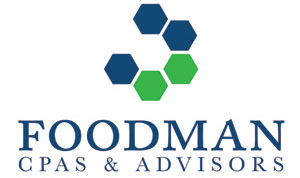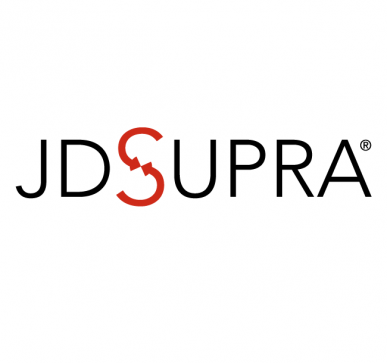Understanding the “GILTI” of the Tax Reform – JD Supra 3/27/18.
The Tax Cuts and Jobs Act (TCJA) introduced several complex, hard to understand international tax provisions to the Internal Revenue Code. One of them is the tax on Global Intangible Low-Taxed Income (GILTI). Beginning with January 2018, a U.S. shareholder of any Controlled Foreign Corporation (CFC) is required to include its pro rata share of GILTI in its annual reportable Gross Income. The GILTI tax is imposed on the GILTI of 10% or greater U.S. Taxpayer Shareholders of a CFC.
GILTI tax is a broader concept than just a tax on income derived from the use of intangible assets. Here are some definitions straight from the TCJA:
- The term ‘global intangible low-taxed income’ means, with respect to any United States shareholder for any taxable year of such United States shareholder, the EXCESS (if any) of “(A) such shareholder’s net CFC tested income for such taxable year, over “(B) such shareholder’s net deemed tangible income return for such taxable year.
- The term ‘net deemed tangible income’ means, with respect to any United States 10% shareholder for any taxable year, an amount equal to 10 percent of the aggregate of such shareholder’s pro rata share of the qualified business asset investment (QBAI) of each controlled foreign corporation with respect to which such shareholder is a United States shareholder for such taxable year.
- The term QBAI means the average of the corporation’s aggregated adjusted bases as of the close of each quarter of that tax year in specified tangible property:
(A) used in a trade or business of the corporation, and
(B) of a type with respect to which a deduction is allowable under Code Sec. 167. (Code Sec. 951A(d)(1))
How to Calculate GILTI:
- The Formula for GILTI at the Shareholder level: Net Tested Income – [(10% of QBAI) – interest expense]
- Tested Income or Tested Loss is required to be calculated before a Shareholder is able to determine the Net Tested Income.
- The Tested Income of a CFC is the excess of its gross income over deductions (including taxes) properly allocable to such income.
- The Tested Loss of a CFC is the excess of allocable deductions over gross income.
- Gross income does not include the amount of Subpart F income, income which would have been Subpart F income if the high-tax exception had not been elected, income taxed as effectively connected with a U.S. trade or business, and dividends received from a related person -for purposes of determining Tested Income and Tested Loss
- For a US shareholder, Net Tested Income equals the aggregate amount of its pro rata share of Tested Income from each CFC and then reduced by the aggregate amount of its pro rata share of Tested Loss from each CFC.
- When GILTI is calculated, the Net Tested Income is reduced by 10% of QBAI less interest expense.
- The tax on GILTI income is taxed at ordinary income rates for Individual Shareholders and Pass-Through Entity Shareholders.
For tax years that begin after Dec. 31, 2017 and before Jan. 1, 2026, a U.S. corporation that is a U.S. 10% shareholder of a CFC has a deduction allowed in an amount equal to the sum of:
- 37.5% of the foreign-derived intangible income of the domestic corporation for the tax year, plus
- 50% of the GILTI amount (if any) which is included in the gross income of the domestic corporation under Code Sec. 951A for the tax year.
Other GILTI Facts:
- A U.S. corporate parent is entitled to a credit against this U.S. Income Tax for 80% of the total amount of Non-U.S. income taxes that it and its subsidiaries pay on their GILTI.
- U.S. Individual Shareholders are NOT eligible for the GILTI deduction.
- GILTI does not include effectively connected income, subpart F income, foreign oil and gas income, or certain related party payments.
- The effective tax rate on GILTI for a domestic corporations is 10.5% given the new corporate rate of 21%
- For purposes of paying U.S. income tax on GILTI a corporate U.S. shareholder is allowed 80% of the foreign tax credits paid on such income.
- Foreign derived intangible income of U.S. corporations (a/k/a as “patent box”) will be taxed at 13.125% to benefit income on U.S. intangibles that are generated outside of the U.S.
- GILTI rules apply to:
- a U.S. Corporation that is a parent of a non-U.S. subsidiary corporation is the parent of non-US subsidiaries
- a U.S. Pass-Though entity that is the parent company
- a US individual that owns a non-U.S. company
Pass-Through entities and U.S. individuals that own a non-U.S. company are not entitled to the 80% credit that a U.S. corporate parent is entitled to. The GILTI rules are designed to prevent deferral of tax on CFC income and the rules apply differently to U.S Corporate Shareholders and U.S. Individuals.
Don’t be a victim of your own making. If you are a U.S. Person that owns 10% of vote or value of a CFC, consult your specialized and licensed tax counsel.
https://www.jdsupra.com/legalnews/understanding-the-gilti-of-the-tax-15732/





